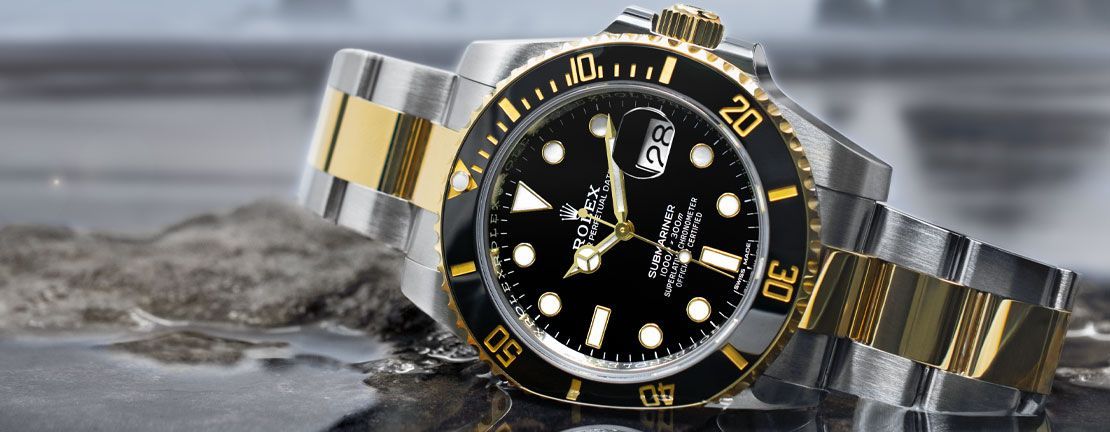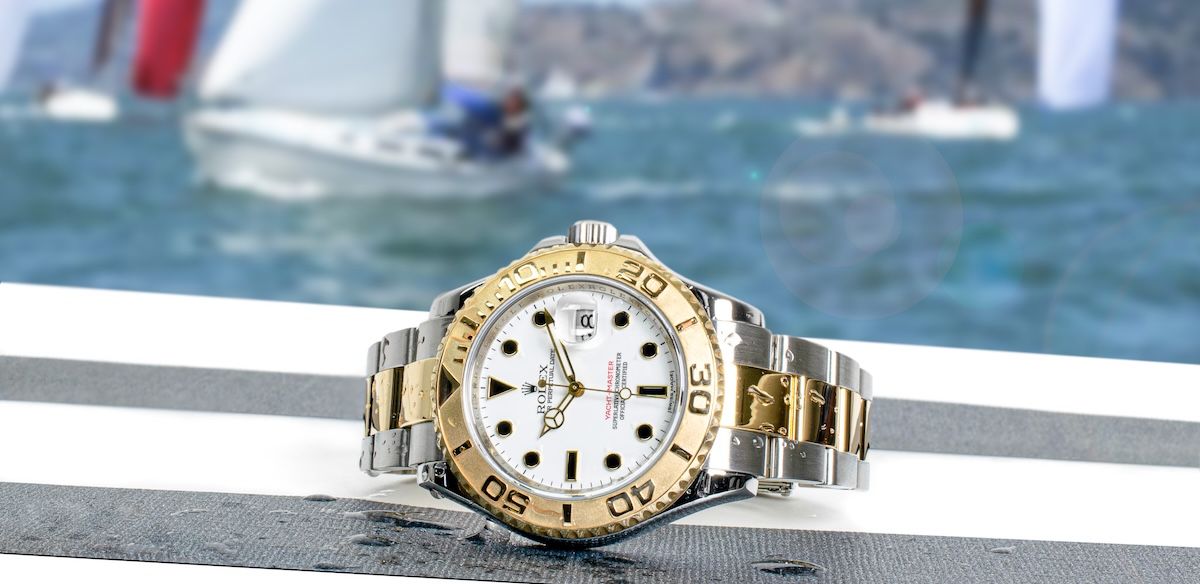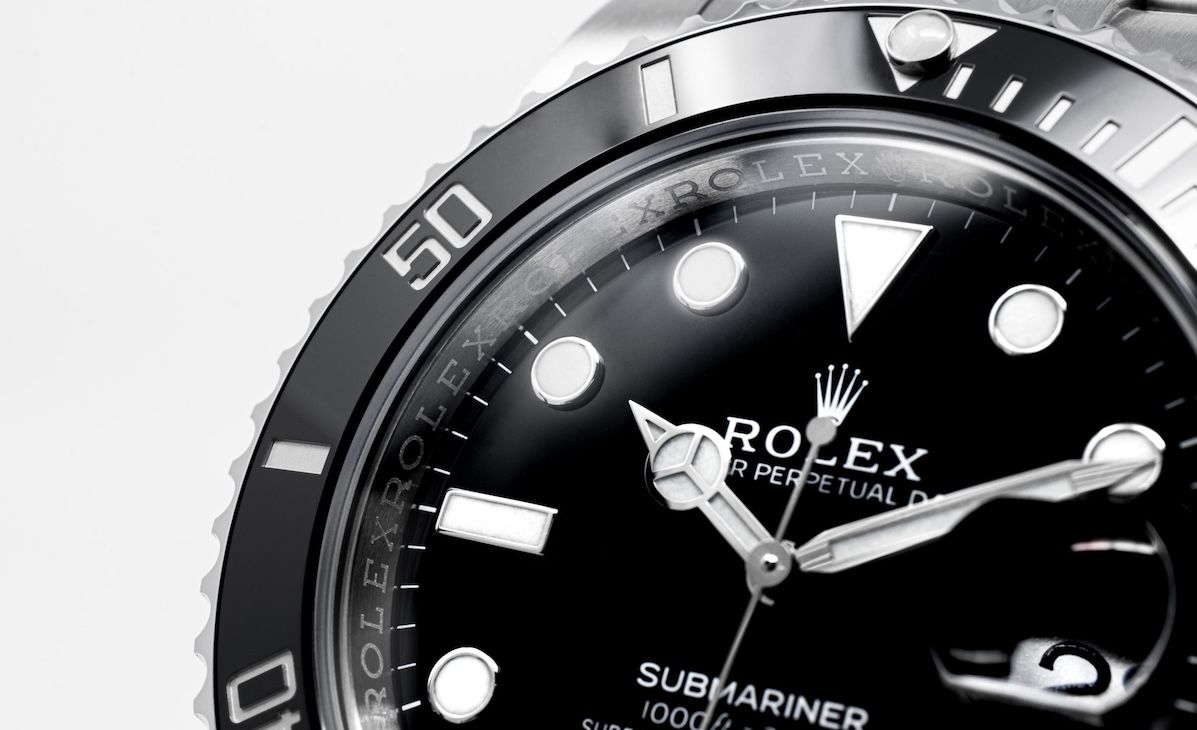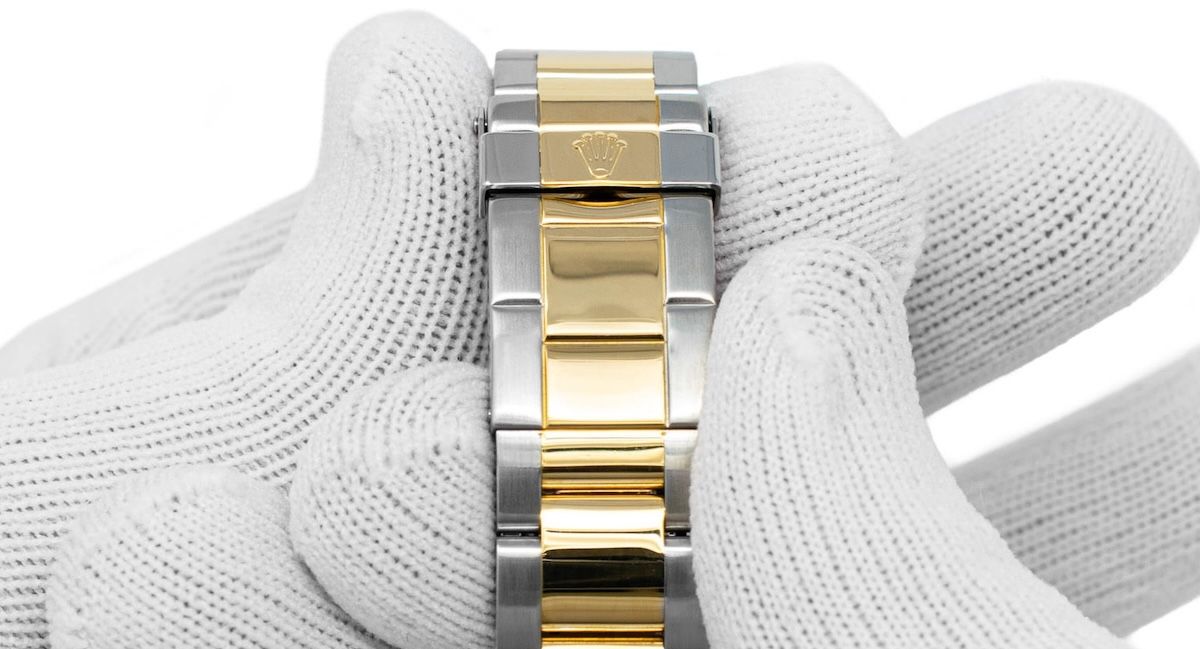Welcome to my watch showdown between two of Rolex's maritime marvels: the rugged Submariner and the sleek Yacht-Master.
Now, full disclosure: I've got my personal favorite. But in the spirit of fairness (and to avoid an onslaught of passionate comments), I'm keeping my cards close to my chest. This comparison is all about giving you the unvarnished truth, letting these two models duke it out on their own merits.
Let's address the elephant in the room – or should I say, the yacht in the harbor. While these Rolex watches have their specific purposes, chances are you're neither a professional deep-sea diver nor the owner of a gleaming superyacht. (If you are, well, kudos to you! You probably already know which of these beauties is calling your name.)
For the rest of us landlubbers and casual swimmers, choosing between the Submariner and Yacht-Master is less about the technical necessity and more about the features that resonate with personal preference - ultimately, there's no wrong choice.
The History of the Rolex Submariner and Yacht-Master
While the Submariner and Yacht-Master might seem like aquatic siblings, they have a close-on 40-year age gap. In fact, without the Submariner's trailblazing success, we probably wouldn't be having this conversation. The Submariner didn't just set the bar; it redefined the entire category of luxury sports watches.
Its younger sibling, the Yacht-Master, sailed onto the scene much later, bringing a fresh breeze of luxury to Rolex's seafaring lineup. Let's chart the course of these two legends, and I'll ease up on the nautical metaphors!
Origins of the Rolex Submariner


The Rolex Submariner made its debut in 1953, but its story began a few years earlier. In the post-war era of the early 1950s, recreational diving was gaining popularity, and with it came a need for reliable underwater timekeeping.
Rolex, already known for its waterproof Oyster case, saw an opportunity to create a purpose-built watch for this emerging market. The goal was ambitious: to design a timepiece that could withstand the pressures of deep-sea diving while maintaining the precision and reliability Rolex was known for.
But Rolex didn't just slap a waterproof case on a regular watch and call it a day. Oh no, they went all in. They created a watch that could withstand the rigors of professional diving while still looking sharp enough for a night out on dry land.
The result was the Submariner, a watch that would go on to define the dive watch category.
The original Submariner was water-resistant to 100 meters, which was pretty impressive for the time. It featured a rotating bezel for divers to track their immersion time - a feature that's since become a hallmark of dive watches and a defining characteristic of the Submariner's design.
Key milestones in the Sub's journey include:
- 1959: The introduction of crown guards, giving the watch its distinctive silhouette.
- 1960s: The introduction of a date complication marked the creation of the Submariner Date line.
- 1979: The watch got an upgrade to withstand depths of up to 300 meters and the switch to scratch-resistant sapphire crystal.
- 1983: Rolex expanded the Submariner lineup by introducing the first two-tone steel and gold version, known as “Rolesor.”
And let's not forget its brush with fame. The Submariner became a star in its own right, appearing on the wrist of none other than James Bond. Nothing says "cool" quite like being the watch of choice for a spy who spends as much time in tuxedos as he does underwater.
By the time the 1990s rolled around, the Submariner had cemented its place as a sought-after model for luxury watch enthusiasts worldwide.
Little did Rolex know that this success would set the stage for its next nautical watch - but that's a story for our next section.
Development of the Rolex Yacht-Master


The Yacht-Master's story begins in an unexpected place—the design room for the Submariner. In the 1980s, Rolex considered completely redesigning this popular watch. However, they ultimately decided against changing such a successful model. Instead of scrapping the new designs entirely, Rolex saw an opportunity to create something new.
This decision led to the birth of the Yacht-Master in 1992. Positioned as a more luxurious take on the nautical watch theme, it shared some DNA with the Submariner but carved out its own distinct identity.
The original Yacht-Master featured a 40mm case and was initially only available in solid gold - a clear signal of its luxury positioning. It sported a bidirectional rotating bezel with raised numerals, setting it apart from its diving cousin. It was Water-resistant to 100 meters and was designed more for the deck than the depths.
Key milestones in The Yacht-Master's timeline include:
- 1994: Introduction of the mid-size 35mm and 29mm model
- 1996: Introduction of the two-tone steel and gold (Rolesor) models
- 2015: Release of the Yacht-Master 40 with the Oysterflex bracelet and Cerachrom bezel
- 2019: Introduction of the Yacht-Master 42 in white gold
While it may have started as an offshoot of the Submariner project, the Yacht-Master quickly established itself as a distinct and desirable model in the Rolex lineup.
Key Differences & Similarities Submariner vs. Yacht-Master
Quick Comparison Table
| Feature | Rolex Submariner | Rolex Yacht-Master |
|---|---|---|
| Launch Year | 1953 | 1992 |
| Primary Purpose | Professional diving | Luxury boating & sailing |
| Case Sizes | 37mm & 40mm (discontinued), 41mm | 29mm & 35mm (discontinued), 37mm, 40mm, 42mm |
| Bezel | Unidirectional rotatable bezel | Bidirectional rotatable bezel |
| Movement | Caliber 3235 | Caliber 3235 / 2236 |
| Bracelet Options | Oyster Bracelet | Oysterflex, Oyster |
| Dial Options | Variety of colors with sunburst effect | Various colors and mother-of-pearl |
| Waterproof | 300 meters (1,000 feet) | 100 meters (330 feet) |
Case and Dimensions
At the heart of both the Submariner and Yacht-Master lies Rolex's renowned Oyster case made from Oystersteel, Rolex's proprietary 904L stainless steel. This high-performance alloy offers superior corrosion resistance compared to the industry-standard 316L steel thanks to its unique composition of nickel, chromium, copper, and molybdenum.
Rolex Submariner Case
- Sizes include: 37mm & 40mm (discontinued), 41mm
- Current size: 41mm (introduced in 2020)
- Previous standard size: 40mm
- Crystal: Sapphire with anti-reflective coating on the underside
- Finish: Satin-brushed lugs with polished case sides
- Notable feature: Laser-etched Rolex crown at 6 o'clock position
The Submariner's case size has evolved over its lifespan, reflecting changing tastes and Rolex's adaptability. The now-discontinued 37mm version once catered to those preferring a more compact dive watch. The 40mm case was the Submariner standard for many years, striking a balance between presence and wearability that resonated with many enthusiasts.
In 2020, Rolex increased the case size to 41mm. This subtle yet noticeable change gives the Submariner a slightly bolder appearance on the wrist while preserving the model's classic proportions and design elements that have made it a favorite.
Rolex Yacht-Master Case
- Current sizes: 37mm, 40mm, 42mm
- Initially released in three sizes: 29mm (ladies), 35mm (mid-size), and 40mm (full-size)
- Crystal: Sapphire with Cyclops lens over the date
- Notable feature: Rolesium option (platinum bezel on steel case)
The Yacht-Master made history as the first sports watch to offer such a diverse range of sizes. While the original 29mm and 35mm versions have since been discontinued, the current range still offers impressive versatility with its 37mm, 40mm, and 42mm options.
Bezel Characteristics


Both the Submariner and Rolex Yacht-Master feature rotating bezels, but their designs and functionalities differ to reflect their distinct maritime roles.
Rolex Submariner Bezel
- Unidirectional rotation
- Made from Cerachrom (Rolex's proprietary ceramic)
- 60-minute graduations with hash marks for the first 15 minutes for more precise timing, followed by 5-minute markings
- Serrated edge for improved grip
- Highly legible in low-light conditions due to luminous pip at 12 o'clock
The Submariner features a unidirectional bezel, a critical feature for a dive watch. Any accidental movement of the bezel can only result in an apparent increase in dive time, promoting diver safety. Constructed from Rolex's proprietary Cerachrom ceramic, the bezel offers exceptional resistance to scratches and UV fading.
The Submariner bezel's color options are relatively conservative. It is primarily available in black, with select models offering blue or green variants.
Rolex Yacht-Master Bezel
- Bidirectional rotation
- Bezel material varies by model - Cerachrom or precious metals
- Markings - 60-minute graduations with raised, polished numerals
- Three-dimensional appearance due to raised numerals
The Yacht-Master’s bidirectional bezel is designed to make it easier to calculate precise intervals while sailing. While many Yacht-Master models also utilize Cerachrom, you can also choose bezels in precious metals like platinum and gold.
Dial Comparison


The Submariner and Yacht-Master share some dial features, such as Rolex's Chromalight for superior low-light visibility. They also both feature the distinctive Mercedes-style hour hand. However, beyond these shared traits, the dials of these two models diverge
Submariner Dial
- Primarily black dials, with notable exceptions like the "Kermit" (green bezel, black dial) and "Hulk" (green dial and bezel) models.
- Large, luminous hour markers with a prominent triangle at 12 o'clock.
- Mercedes-style hour hand, straight minute hand, and lollipop seconds hand.
- Date window at 3 o'clock with Cyclops lens on applicable models.
- Maxi dial feature on modern versions, with larger hour markers and hands.
Previous iterations of the Submariner featured smaller hour markers and hands and a glossy or matte dial finish, depending on the era. The modern Maxi dial, introduced in 2013, features larger markers and hands.
Yacht-Master Dial
- The Yacht-Master offers a broader palette, including black, blue, rhodium, and even mother-of-pearl for a touch of opulence.
- Slightly more refined hour markers, often featuring precious metal surrounds.
- Similar hand style to Submariner, but sometimes incorporates a colored seconds hand for contrast.
- The date window is always present at 3 o'clock with Cyclops lens.
- Some models feature diamond-set hour markers and sunburst dial finishes.
It should also be noted that the Yacht-Master II models stand out with a unique regatta chronograph layout featuring a programmable countdown function specifically designed for yacht racing.
Bracelets and Clasps


The Submariner exclusively features the Oyster bracelet, designed for durability in harsh diving conditions. It's primarily offered in Oystersteel, with some two-tone Rolesor and all gold models available.
The Yacht-Master is available with both the traditional Oyster bracelet and the Oysterflex bracelet (a rubber strap with a flexible metal core). Material options including Oystersteel, Everose gold, white gold, and yellow gold.
Both watches incorporate Rolex's advanced clasp technologies: the Easylink extension for quick 5mm adjustments and the Glidelock for precise micro-adjustments, particularly useful for divers who want to expand the bracelet over a wetsuit. Both models also feature the Fliplock safety clasp.
One further differentiation is the Yacht-Master often sports polished center links, lending it a more refined appearance compared to the Submariner's fully brushed finish, which emphasizes its tool watch heritage.
Movement and Performance
Rolex's in-house movements power both the Submariner Date and Yacht-Master, sharing a commonality in the form of the Caliber 3235. However, the Submariner no-date is powered by the caliber 3230 and the Yacht-Master line also features an additional movement option.
Submariner’s Caliber 3235 Movement
The Rolex Submariner Date is powered by the Caliber 3235 movement, a next-generation self-winding mechanical movement. (fun fact: it also powers many other Rolex watches including another Rolex nautical watch, the Sea-Dweller)
The Caliber 3235 offers an impressive 70-hour power reserve, meaning the watch can continue running for nearly three days without needing to be worn or wound. This extended power reserve is a significant upgrade from previous models.
The Caliber 3235 is COSC-certified (Swiss Official Chronometer Testing Institute) and boasts an accuracy rating of -2/+2 seconds per day. This level of precision exceeds the standard chronometer requirements, making the Submariner highly reliable for professional use, particularly diving.
The movement includes Rolex’s proprietary Chronergy escapement, which improves efficiency by 15% over traditional designs. It also features a Parachrom hairspring, designed with paramagnetic properties, temperature resistance, and anti-shock capabilities in mind.
Yacht-Master’s Caliber 3235 and 2236 Movements
The Rolex Yacht-Master is powered by two different movements depending on the model: the Caliber 3235 and the Caliber 2236 for the 37mm model.
The caliber 3235 is used in the 40mm and 42mm models. It's the same movement found in the Submariner Date, offering identical performance specifications.
Caliber 2236 (for 37mm models)
The Caliber 2236 is a self-winding mechanical movement designed specifically for smaller watches. It features a Syloxi hairspring, which is highly resistant to temperature variations, shocks, and magnetic interference. This movement, while slightly smaller than the Caliber 3235, offers an impressive 55-hour power reserve.
Like the Caliber 3235, the Caliber 2236 meets Rolex’s Superlative Chronometer certification, with accuracy within -2/+2 seconds per day.
Water Resistance
Unless you're a professional diver or regularly engage in deep-water activities, both watches offer more than enough water resistance for typical use. Most wearers, even those who swim frequently, will find the Yacht-Master's rating more than adequate for their needs. The Submariner's superior water resistance, while impressive, is often more about adhering to its diving watch legacy than practical necessity for the average wearer.
The Submariner is water resistant to 300 meters (1,000 feet). This exceptional rating is achieved through several features, including the Triplock crown system with triple waterproofness and a solid case back. The Submariner's water resistance makes it suitable for professional divers and serious water enthusiasts.
The Yacht-Master's water resistance is 100 meters (330 feet), which is more than adequate for most water-based activities, including swimming and snorkeling.
Resale Value and Market Demand
Both watches benefit from Rolex's overall brand strength and limited production numbers, which help maintain their value. The Submariner's longer history and broader recognition give it an edge in the resale market, and it experiences more consistent demand.
That’s not to say that the Yacht-Master, with its more diverse range of materials and designs, doesn’t appeal to collectors. Especially looking for something slightly less common than the ubiquitous Submariner.
The Verdict: Sub or Yacht-Master?
Well, there you have it. We've gone deep on the Submariner and Yacht-Master; now it's decision time.
The Submariner is a classic for a reason. It's tough, reliable, and has that unmistakable look that turns heads whether you're diving or just grabbing coffee. It's the watch that started it all, and it's still going strong.
Discover Our Pre-Owned Submariner Collection
Or perhaps the Yacht-Master has won you over?
The Yacht-Master has the Rolex pedigree, sure, but with a twist that sets it apart from the crowd. This could be your ticket if you're looking for something a bit more elegant and a little less common.


